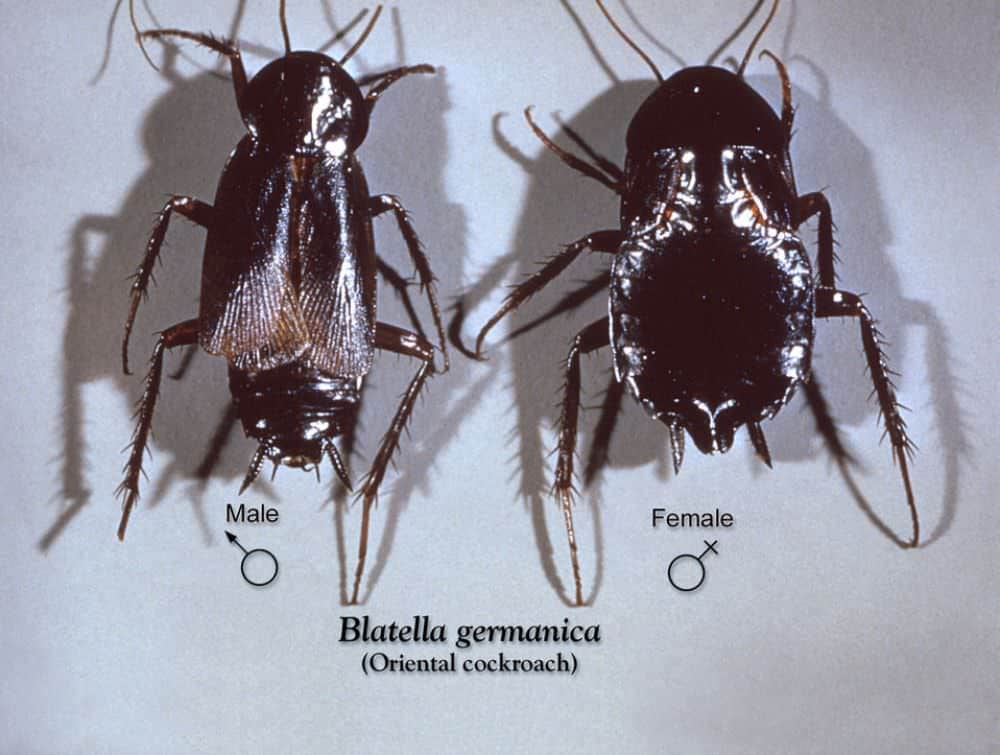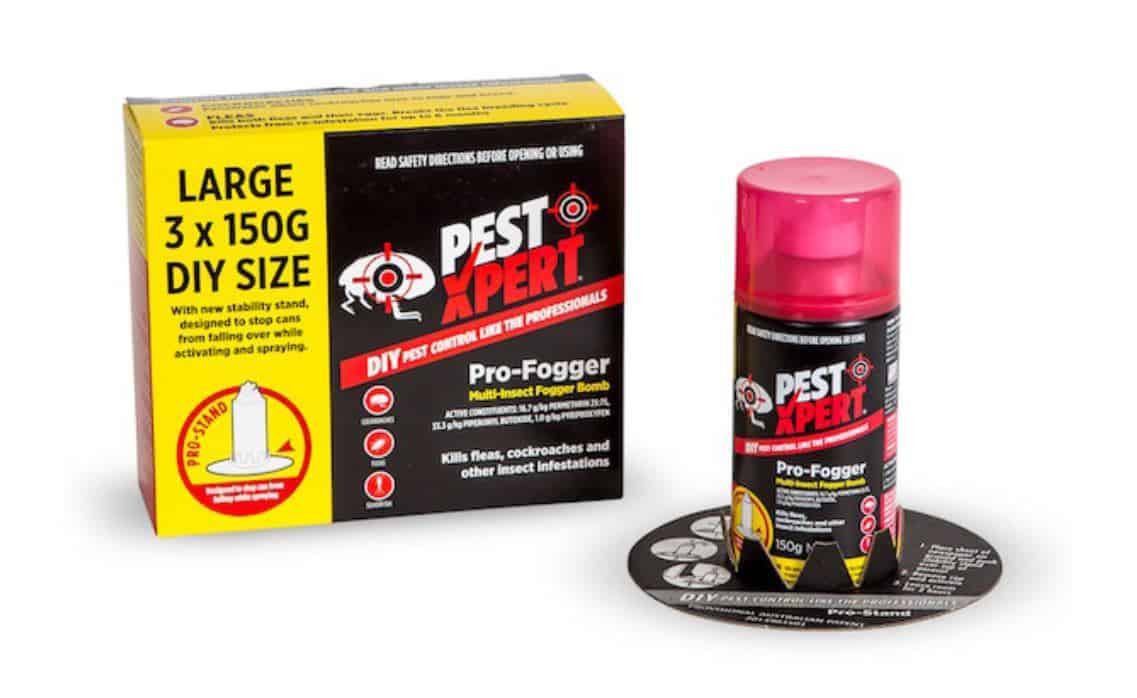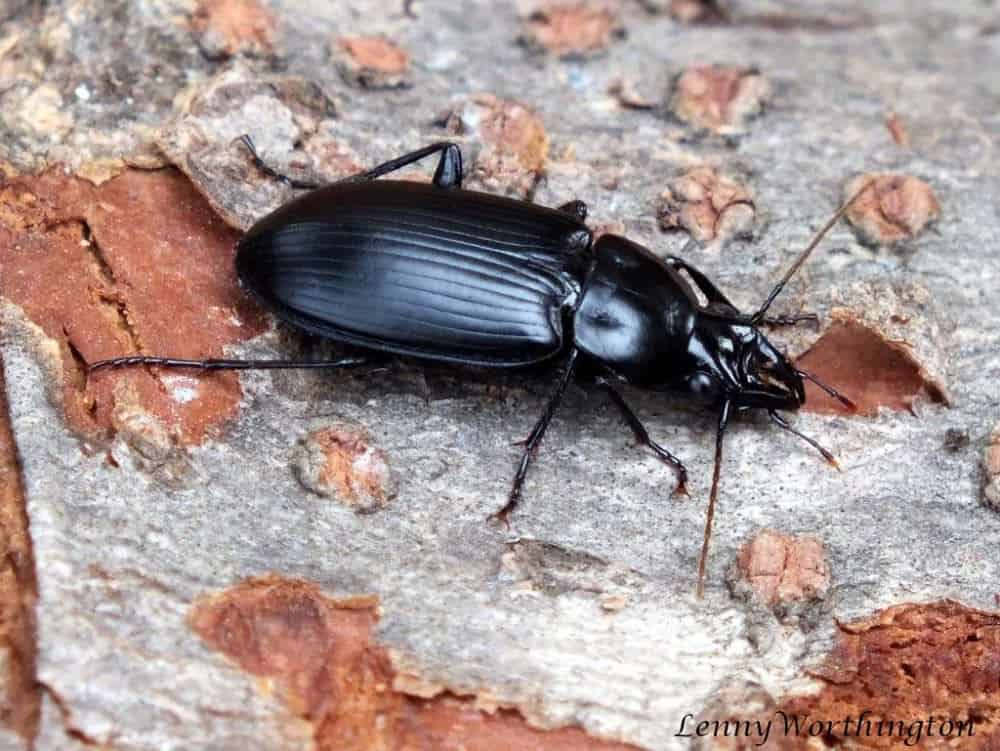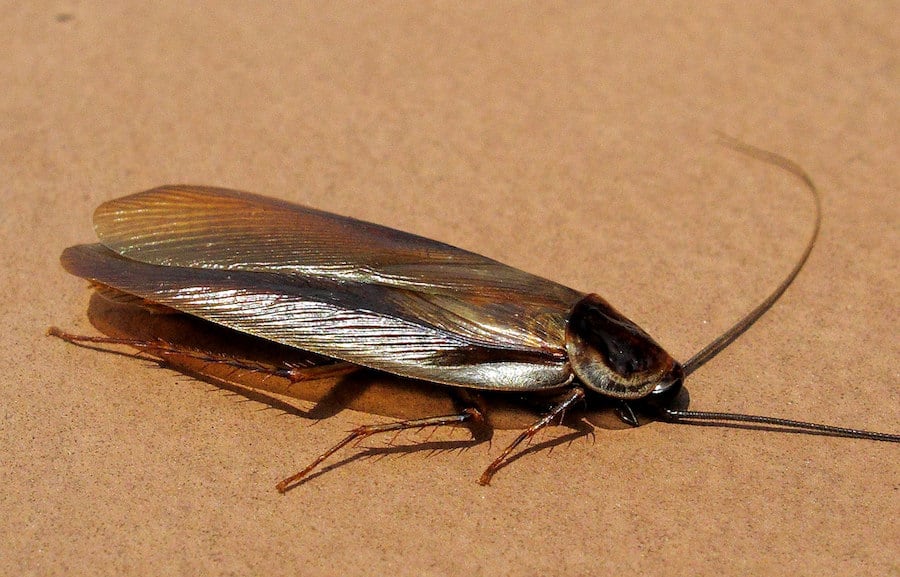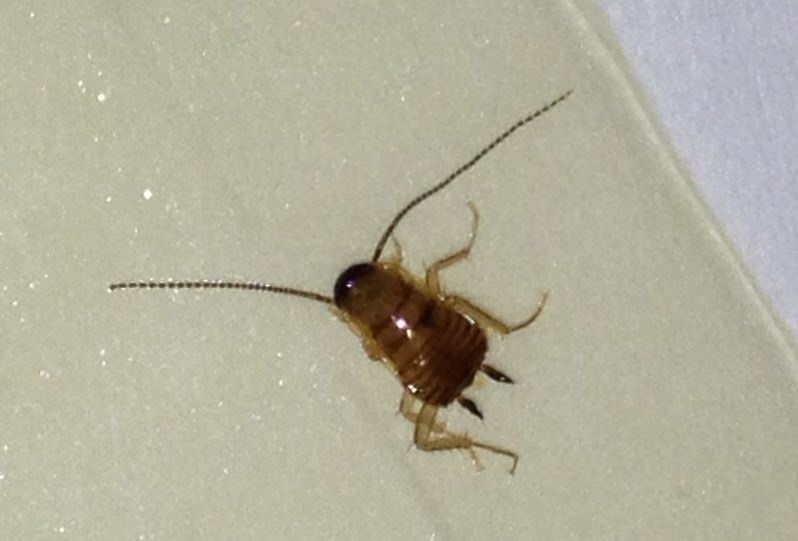How to Get Rid of Roaches
Few household pests inspire as much revulsion as cockroaches. Although they’re less harmful (though still harmful) than some other invaders, just mentioning the word “cockroach” is enough to give most people the heebie jeebies.
Given how much disgust they trigger, it’s no surprise that many people panic and call the exterminator as soon as they see one of these little creatures wave its antennae at them. But if you’ve discovered a cockroach problem, you don’t need to pick up the phone right away. In most cases, a cockroach infestation is something you can handle yourself – and save a lot of money in the process.
In this article, I’ll go over everything you need to know to identify a cockroach problem, exterminate the cockroaches in your home, and prevent them from invading your premises again.
Are Cockroaches Harmful to Humans?
When you discover a cockroach problem in your home, you might ask yourself just how worried you should be. Cockroaches are unappealing and most people feel disgust or revulsion toward them, but do they also carry risks?
To begin with, let me reassure you that cockroaches, unlike bed bugs, don’t use human beings as a source of nourishment. They have no interest in biting you or feeding on you. Because of that, they also won’t transmit any diseases to you this way.
That doesn’t mean, however, that cockroaches are completely harmless.
Bacteria and Food Contamination
While cockroaches rarely transmit diseases to humans by biting and infecting them directly, they are known to carry many disease-causing bacteria. They spread these bacteria through their saliva, feces, and simply by crawling around and coming into contact with the things in your home.
In addition to the things they secrete, cockroaches also pick up a number of bacteria by crawling around in rotten food.
Bacteria spread by cockroaches can cause a number of conditions, including sepsis and urinary tract infections.
This is especially worrisome when it comes to food. Cockroaches coming into contact with food that has been left out can lead to salmonella and other types of food poisoning.
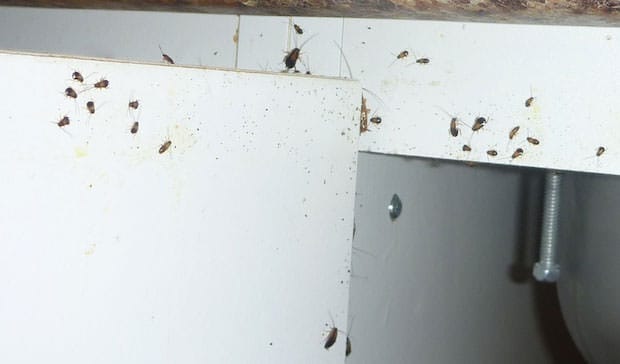
Asthma Attacks and Other Allergic Reactions
Up to two-thirds of people who suffer from asthma can experience an asthma attack when they come in contact with cockroach saliva or fecal matter. Children with asthma are especially likely to have these reactions.
People who don’t have asthma can still experience allergic reactions to cockroaches. Watery eyes, sneezing, and rashes can be
Are Cockroaches Harmful to Pets?
If you’re a cat or dog owner and cockroaches have invaded your home, it’s natural to worry about your furry friends.
As with humans, cockroaches normally don’t pose a direct threat to your pets. It’s very rare for them to bite dogs or cats. When they do, it’s because they can’t find other food sources and get desperate enough to try feeding off a large (in their eyes) animal.
In general, cockroaches are intimidated by cats and dogs and will scurry away and hide rather than confront them. So, your pet is mostly safe.
The biggest worry is, again, bacteria and contamination. Your cat or dog’s food or water dishes are an easy and appealing source of food for cockroaches, and this might compromise the safety of your pet’s food.
Dogs can also corner and eat a cockroach. There are, to my knowledge, no known cases where this has caused any serious complication for the animal, but it will expose the dog to bacteria so there is definitely a potential for your pet getting sick if they do this.
Can Cockroaches Get Lodged in Your Ear?
This is the one that really makes people cringe. Many people have heard that cockroaches can crawl into your ear when you’re sleeping. That’s a terrible thought, to be sure, but is it true?
Unfortunately, the answer is yes, it does happen.
Your ear just so happens to be a very appealing environment for cockroaches. They like warmth, humidity, and small spaces, and your ear checks all those boxes. On top of that, earwax has a scent that is appealing to them.
If that wasn’t freaky enough, once a cockroach crawls into the ear, it’s most likely to get stuck. So, if a cockroach crawls into your ear while you’re asleep, it’s not only shiver-inducingly gross, it’s also going to be a problem you have to deal with. It most likely won’t be alive by the time you wake up and realize it’s happening, but you will need to find a way to dislodge it or get to a hospital and get a medical professional to take care of the problem.
That’s the terrible news. The good news is that it’s highly unlikely.
As appealing as your ear canal is to a cockroach, they usually find many more appealing places in your home to dwell and explore.
It’s not unheard of. One clinician in Alabama estimates he deals with an insect lodged in the ear canal four or five times a year. Still, not all of those instances involve cockroaches (cold comfort, I know!)
If it does happen, it’s something of a freak accident, so you shouldn’t be losing too much sleep over it. But it should give you additional motivation to deal with your cockroach problem and deal with it swiftly.
How Do Cockroaches Get in Your Home?
Cockroaches can be quite big, so it makes a lot of people wonder how they could invade a home without anyone noticing. Yet there are multiple ways for cockroaches to get in and start an infestation.
Carrying Them In
In many cases, people carry cockroaches into their homes without realizing it.
One of them may have snuck into your bag while it was out of your sight at work or at someone else’s place. Or one of them may have made its way into your luggage while you were away from home. Once you return and they crawl out and find a hiding spot, you’ve got the makings of an infestation on your hands.
And if you would catch a sneaky cockroach trying to hitch a ride home with you, you might not notice the eggs they could leave in your bags. At just under a third of an inch in size, cockroach eggs are hard to spot, especially if their color (brown or reddish-brown, depending on the species of cockroach) happens to blend in well.
If you have a wood-burning stove, you might also be bringing cockroaches when you carry in a bundle of firewood. Cockroaches can hide between logs, but also rest in cracks and other spaces in individual logs. If you bring in a lot of firewood at once or keep a large stack indoors, you’re more likely to be housing a cockroach or two without realizing it.
Crawling in on Their Own
Even if you’re very diligent about making sure you don’t bring cockroaches into your dwelling, they might find their way in anyway.
Although cockroaches seem big, they’re quite slim and they’re able to wriggle into some fairly tight spaces. That means any cracks in your exterior walls or the foundation of your home could essentially act as an open door for them.
But even if the walls and foundation of your home are tightly sealed, cockroaches still can find various openings. Vents and open windows are two potential points of entry. Another one is the space underneath your door. It only has to be about 1/16 of an inch high for cockroaches to squeeze through and into your house or apartment unit.
Cockroaches will also travel through pipes, which means your drain might be the way they got into your home. This happens primarily in apartment buildings, where the piping system can connect to multiple units, essentially creating a channel that cockroaches can use to move from one place to the next. If the drain at the end of the pipe doesn’t have some kind of stopper or wire mesh basket (like the ones you might use to keep your wedding ring from falling down the drain), cockroaches can crawl out of the piping system and establish themselves in a new home.
What Attracts Cockroaches?
If there’s one thing people know about cockroaches, it’s that they thrive in filthy environments. There’s some truth to that. When a home is cluttered, messy, and dirty, it will be more difficult to spot cockroach activity before you have a quite sizeable infestation on your hands. Moreover, a messy home is more likely to have bits of food lying around, which is appealing to cockroaches looking for nourishment.
But that doesn’t mean your home is cockroach-free just because you keep it clean and tidy. Cockroaches are attracted to three basic things: water, food, and shelter. And that, unfortunately, is on offer no matter how well you keep your home.
So, if you see some signs of cockroach activity, don’t dismiss them just because of the cleanliness of your home.
Water
Cockroaches seek out water and moist environments.
Just about any source of water will appeal to them. Condensation on basement windows or under air conditioners can attract them. It’s the same with water dishes left out for a cat or dog.
Leaking pipes are usually out of sight and provide plenty of water and moisture. That makes them especially enticing for cockroaches.
Nourishment
Cockroaches have a reputation for eating just about anything, and that’s a reputation they’ve earned. Far from being picky eaters, there isn’t really any type of food (including some stuff we wouldn’t normally consider food) that doesn’t appeal to them. If it’s got calories, you can bet they’ll eat it.
They do have preferences, though. Sources of nourishment that have a stronger scent are more likely to attract them. That’s why rotting food and garbage puts you at a higher risk of getting cockroaches in your home.
When there’s no rotting food around, they tend not to go for the healthy stuff first. Sugary foods are ideal, but greasy food, meats, and cheeses are also practically cockroach bait.
It’s important to know, too, that cockroaches can survive between one to three months (sources disagree on the exact number) without eating. Because of that, they don’t need access to a large amount of food to take up residence somewhere.
Shelter
Cockroaches like to have places to hide. They can do that in many of the small, ordinary spaces found in anyone’s home, but they have many more places to find shelter in when there’s plenty of clutter about.
As with food, strong scents appeal to them. That means they’re especially keen on surfaces or clutter made of wood, cardboard, and other materials that absorb smells.
How Do Cockroaches Spread?
Once cockroaches get into your home and take shelter in your dwelling, they’re unlikely to stay in one spot. While they might have initially been attracted to something in particular – crumbs of food on the floor, a pet’s food dish that’s been left out, rotten food in a compost bin – they will spread to different parts of your home if they’re left unchecked.
Cockroaches spread through your home in two ways: by being highly mobile and by reproducing quickly.
Mobility
If you’ve seen cockroaches scurrying away to safety, you know they can be quick. When alerted to some possible danger, they can sprint up to 1.7 miles per hour.
Even if they’re not running at top speed, they can still move at a pretty rapid pace. It doesn’t take long, then, for them to travel from one room to another. This is especially the case if there’s something appeal, like strong odors from your basement or food left out in a bedroom.
Reproduction
Even if they decide to stay put, your cockroach infestation can still grow quickly. That’s because cockroaches are not only tough and resilient, but they also reproduce in large numbers.
How large? Well, it depends on the species. There are four types of cockroaches that invade American homes, and they each lay eggs at different rates. They all, however, have two things in common: they lay multiple eggs at once (by laying a capsule containing multiple eggs) and they lay a lot of them.
A female cockroach will live anywhere from 1 to 30 months, depending on the species. During that time, they’ll lay between 125 and 330 eggs or so, again depending on the species.
You probably don’t need to do the math to see that even a few cockroaches can quickly multiply and become a serious infestation. Attracting a small number of cockroaches, then, is all it takes to end up with a major problem.
How Can You Tell if You Have Cockroaches?
If you want to inspect your home for cockroaches, the only thing you’ll need is a flashlight. Cockroaches are nocturnal, so doing a check at night is recommended since that’s when they’ll be active. They also like to hide in dark places, so you’ll need something to help you shine a light even during the daytime.
Where You Should Inspect
Cockroaches favor dark areas where they can find food, moisture, or both. The most common places for them to hide, then, are in kitchens and bathrooms.
The first place to look in the kitchen is underneath and behind large appliances: the refrigerator, stove, and dishwasher. The look under and behind smaller appliances, like your microwave and toaster.
Look at inside the cupboard under the sink. This spot is especially appealing if the pipes have any small leaks, drips, or condensation.
Next, look through your other cupboards, cabinets, drawers, and pantry closets. Cockroaches will often hide in the backs of these spaces and often on the highest and hardest to reach shelves.
Inspect your open or accessible food containers, especially for sugary food. Carefully check sugar if you keep it stored in the paper bag you bought it in. Any boxes of breakfast cereal you’ve opened should be inspected, too.
Once you’re done looking through the kitchen, tackle the bathroom. The most common hiding spot for cockroaches here is in the cabinet under the sink, but check any other cabinet and drawers as well. If you keep a laundry hamper in the bathroom, look through the clothes in it – cockroaches can find it an appealing place because it’s dark, hidden, and they’re attracted to the smell of dirty laundry.
Those are the most common hiding spots, but you should still check a few other places. Look underneath your washing machine and through any piles of clothes you might have lying around. Look behind picture frames, underneath couches and armchairs, and under and between couch cushions.
If the baseboards or moldings that line your walls have any cracks or spaces in them, shine your flashlight behind them to have a peek. The space might seem small, but cockroaches don’t need a big opening to feel comfortable.
Finally, if you have an unfinished basement or even a basement you don’t use frequently, check the walls and ceilings throughout it. Basements are often humid and dark, which makes it a great place for cockroaches to hide. Any exposed pipes in the basement could also provide condensation or leaks that provide cockroaches with a source of water.
Signs to Look For
The first sign to look for is egg casings and castoff skin. But you might also find droppings or notice a strange odor.
Egg Casings
Cockroaches don’t lay a single egg at a time. Rather, they deposit an egg casing that contains multiple eggs (some species will carry the egg casing around on them until the eggs are ready to hatch). Finding one of these egg casings is a sure sign that you’ve got cockroach activity in your home.
The egg cases are oval or almost rectangular with rounded edges. Depending on the species of the cockroach that deposited them, they will be either light brown or dark brown. While they’re bigger than the eggs laid by some other pests, cockroach casings are still only about a third of an inch in length, so you will have to look closely to find them.
Shed Skin
As young cockroaches (known as nymphs) grow to adulthood, they shed their skin. The skin is easy to identify because it’s solid and doesn’t stretch, which means it retains the shape of the body even after it’s shed. Shed skin, then, looks just like a cockroach except it’s lighter in color and, naturally, won’t move.
Droppings
You might also find cockroach droppings wherever they’ve been active.
Cockroach droppings are black or brown, but what they look like depends on the size of the cockroach leaving them behind.
Smaller cockroaches will leave feces that look almost like coarse ground pepper, though they may also simply be smeared onto some surface. Droppings from larger cockroaches are cylindrical and solid.
Odor
You’re not likely to notice the smell of a single cockroach. If you’ve got a number of them active in your home, however, you might be able to get a whiff of their collective scent.
Cockroaches communicate with each other through pheromones, so part of the smell they produce comes from emitting these signals for each other. The other source of the smell is the relatively short lifecycle of the cockroach. Some species only live about a month, and those that live longer still go through a relatively quick cycle of reproducing and dying off. If you’ve had cockroach activity in your home for an extended period of time – even a few weeks – you’ll have cockroaches regularly dying and decomposing, which will contribute to the odor.
So, what does cockroach activity smell like? The best way to describe it would probably to call it a musty odor. Though others describe it as also having an oily smell. One thing’s for sure, though, it’s a pungent and unpleasant smell. If you notice it, you’ll know something’s wrong.
What Do Cockroaches Look Like?
Of course, spotting a live cockroach and being able to identify what species it is will be your best way of knowing what you’re dealing with.
There are four species of cockroach that cause problems in American homes. Although they have all have a distinctly roachy appearance – oval body, two long antennae, six legs – they each have their unique properties.
Here’s a breakdown of the characteristics each of them has.
American Cockroach
The most distinctive feature of the American cockroach is its size. At 1.5 to 2 inches in length, they’re among the largest insect pests people have to deal with.
American cockroaches have a reddish-brown color.
Although they are the largest and live the longest, spotting an American cockroach in your home has one silver lining. They reproduce quite slowly compared to other species. Because of this, an infestation of American cockroaches will take longer to grow.
German Cockroach
The German cockroach is one of the smaller cockroaches commonly found in American homes. It is just under half an inch in length and its distinguishing feature is its tan coloring. It also has two dark stripes just behind its head.
Unlike American cockroaches, German cockroaches have a rapid reproduction cycle. If you have a German cockroach problem in your home, then, you can expect it to grow quickly if it isn’t taken care of right away.
Oriental Cockroach
The Oriental cockroach is about 1 to 1.25 inches long and has a very dark brown coloring that can almost look black under certain lighting conditions. Unlike other cockroaches, they also have a shiny appearance.
Brown Banded Cockroach
The brown banded cockroach is another small species, with a length approximately the same as the German cockroach (just under half an inch). As the name implies, this type of cockroach is two-toned: it has a tan or light brown body with darker brown bands along its wings.
How to Get Rid of Cockroaches
We’ve been over the signs of cockroach activity, what the different species of cockroaches you might deal with look like, and how to inspect for a cockroach problem.
If you’ve gone through the steps above and discovered cockroaches, cockroach egg casings, or cockroach droppings in your home, you’ll want to take action right away. In this section, I’ll tell you what you should do to eliminate the cockroaches in your home before they can multiply, spread, and continue putting your health at risk.
Note that while using these measures, you should be doing what you can to make your home less appealing to cockroaches. That way, you won’t have to deal with a brand new crop of them while you’re still trying to eliminate the ones that first made their way into your home. We’ll cover that in the next section.
Set Out Cockroach Bait
Cockroach bait is the most effective product you can use that doesn’t require you to call in an exterminator.
Cockroach bait can be a paste, a powder, or a small trap that contains a roach-killing insecticide. Cockroaches will eat the bait, become infected with the poison, and die. But what makes it so effective is that it won’t kill the cockroach immediately. Instead, it allows the cockroach to go back and mingle with the others, and in the process infect as many as 40 other cockroaches it comes into contact with.
One of the big advantages of using a bait over an insecticide spray is that it’s a very localized application. You don’t have to worry about it blowing through the air and landing on your countertops or other surfaces you’d rather keep clean.
When setting out or applying cockroach bait, remember where cockroaches tend to hide: in the back corners of cabinets and cupboards, under the stove and refrigerator, wherever there is exposed piping, and wherever you’ve seen a cockroach. Apply the bait to those areas.
If you use enough bait, you should be able to get rid of your cockroach problem in about two weeks. A more stubborn infestation can take months to take care of. In those cases, you might have to rotate where you apply the bait gel or place the bait traps.
Use Your Own DIY Natural Cockroach Bait
If you want to use a homemade alternative to commercial bait products, you can create your own using just two ingredients. Mix powdered sugar with three times as much boric acid and dust it in the spots you think will have the most cockroach activity (under sinks, under appliances, and so on).
The sugar lures the cockroaches, who will then eagerly eat the mixture. That puts the boric acid into their system, which is fatal to them.
Soon, you should be able to sweep up the powdered bait, along with the carcasses of the cockroaches that decided to feast on it.
Use a Spray
You can use a spray insecticide specifically formulated to kill cockroaches, but it’s not as effective as a bait gel.
What a spray does exceptionally well is kill roaches on contact. Unfortunately, that will almost invariably leave some cockroaches and cockroach eggs unharmed, since they tend to hide in places that are out of reach and hard for you (and your insecticide spray) to get to.
Still, it never hurts to have an extra weapon in your arsenal. If you’re already using bait gel or bait traps, spraying the areas where you see cockroaches can help you deal with the problem sooner.
If you want to use a spray, look for one that has a nozzle that can extend or that comes with a nozzle extender. That’s especially important for making sure you get the spray further back when spraying under appliances or furniture.
Since these aerosol sprays can be toxic, it’s important that you take all the necessary precautions when using them. You may, for instance, want to use gloves and a disposable respirator mask. And of course, you’ll want to be careful not to contaminate your cooking surfaces or your food with it.
Glue Traps
There are a few different kinds of glue traps, but the most common are essentially flat boxes with a sticky bottom on the inside and a few holes on the sides. The cockroaches walk into the box through the holes, get trapped on the gluey surfaces and can’t escape.
Like sprays, glue traps can be used in conjunction with bait, which is the most effective method. They are generally used for diagnosing a cockroach problem – if you capture a cockroach in a trap, you can be sure you’ve got a larger problem in your home – but they won’t exterminate enough of them to serve as a complete solution.
If the Problem Persists, Call an Exterminator
Calling an exterminator is definitely more expensive than laying out bait and taking care of the problem yourself, but sometimes it’s necessary. If the cockroach infestation gets out of hand, or it seems to keep spreading no matter what you do, it’s time to call in the professionals. They’ll have the expertise, the training, and the specialized products and equipment needed to totally get rid of the cockroaches in your home.
How to Prevent Cockroaches from Infesting Your Home
If you’ve got a cockroach problem, you’ll need to take preventative steps. You should take these once you’ve eliminated the infestation so you can prevent more of these pests from invading your home. But you should also be taking these measures while you’re dealing with the problem so that you can keep the infestation from spreading.
Inspect Your Bags and Luggage Before Returning Home
As I mentioned earlier in this article, cockroaches like to hitch a ride in people’s bags and luggage. If you’ve been away from home, either staying with friends and relatives or traveling, be sure to inspect your bags thoroughly before returning home. Look for both cockroach and cockroach eggs.
Cut Off Their Food Supply
Cockroaches are always looking for something to eat. By cutting off their food supply, you’ll make your home much less appealing to them.
Start by doing a thorough clean to eliminate every speck, crumb, and morsel of food that might be in your kitchen. Clean the counters, sweep and mop the floors, and move the appliances to clean under and behind them. Clear out your pantries, cupboards, and drawers and give them a thorough clean, too, before replacing all the items in them.
Keep your trash can tightly sealed (remember, cockroaches love decomposing food) and make sure not to leave your pet’s food dishes out overnight.
Make sure all your food is in tightly sealed containers. If you’re keeping sugar in the loose paper bag it came in, or you’ve got open cereal boxes in your pantry, you’re leaving some very appealing snacks for any cockroach that happens to be nearby.
Finally, give the other rooms in your home a good vacuuming. That will take care of stray crumbs of food that might be lodged in the rug or find its way on the floor.
Don’t Leave Them Anything to Drink
Cockroaches also like humid environments where they can find some water to go along with the food they consume. Often, this will be pipes that are either leaking or that have condensation forming on them.
Inspect the pipes in your home and fix any leaking ones. If you have a faucet that drips, make sure you tighten it so it stops.
For condensation, all you’ll need is a bit of pipe insulation to keep the pipes from sweating.
Once you’ve taken care of the pipes, just be careful not to leave any water out. If possible, empty and dry your pet’s water dish overnight. And once you’re done using the sink, the bathtub, or the shower, grab a towel and dry them out.
Stop Drains
Cockroaches can get in your home by climbing out of the drains. To prevent them from entering, keep your sinks and tub plugged whenever you’re not using them. You can also get a mesh basked for your drain. Some of them are designed to keep you from losing your wedding ring down the drain, but they also keep cockroaches from crawling through.
Fix Cracks in the Foundation and Exterior Walls
Inspect your home for any cracks in the foundation or the exterior walls. Remember that it doesn’t take a large space for a cockroach to crawl through – a fraction of an inch is all they need to wriggle in. Seal up any crack or hole you find with caulk to prevent any pests from entering.
Manage Your Firewood
Inspect firewood before you bring it into the house, and make sure not to carry too much in at a time. If you have a few logs that will soon go into the fireplace, it probably isn’t a big deal, but stacking half a cord in your basement could provide a great hiding spot and breeding ground for cockroaches.
Summary
Once you made it this far, you probably have the same thought a lot of people do when they learn about dealing with cockroaches: “Wow, is it really that easy?” After hearing people say that cockroaches can survive a nuclear assault, it’s surprising to find out that a bit of bait laced with boric acid is all it takes to kill the cockroaches in your home. But in most cases, it really is that simple.
Remember that exterminating the cockroaches is just one part of the solution. You’ll also have to make your home less accessible and less inviting to them. As long as you seal up all the cracks in the walls, stop all the drains, and keep every room clean and clear of food crumbs, you should be able to return your home to its old cockroach-free state in no time.
You will have to call the exterminator if the infestation is especially large or if it’s so stubborn that you can’t seem to kill all the cockroaches no matter what you try. But if you spot a few cockroaches in your home, I highly recommend trying to take care of them yourself. It’s worth giving it a shot to save you the time, money, and inconvenience involved in hiring an extermination service.

